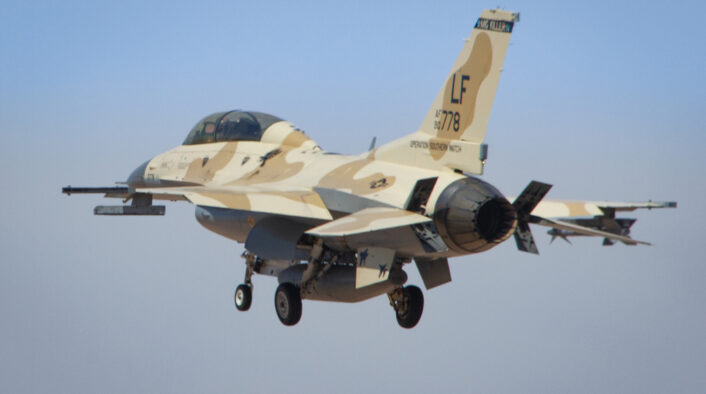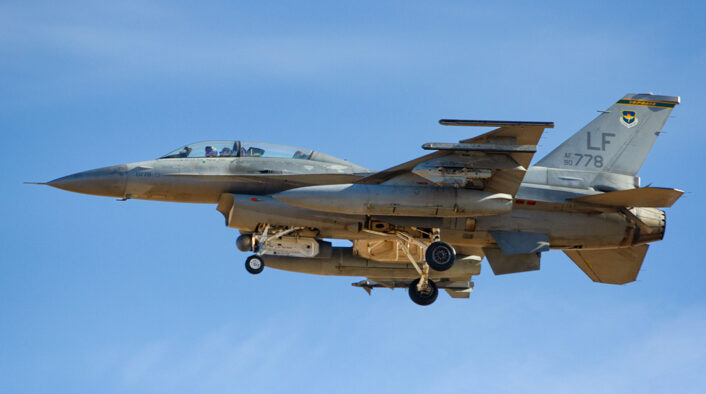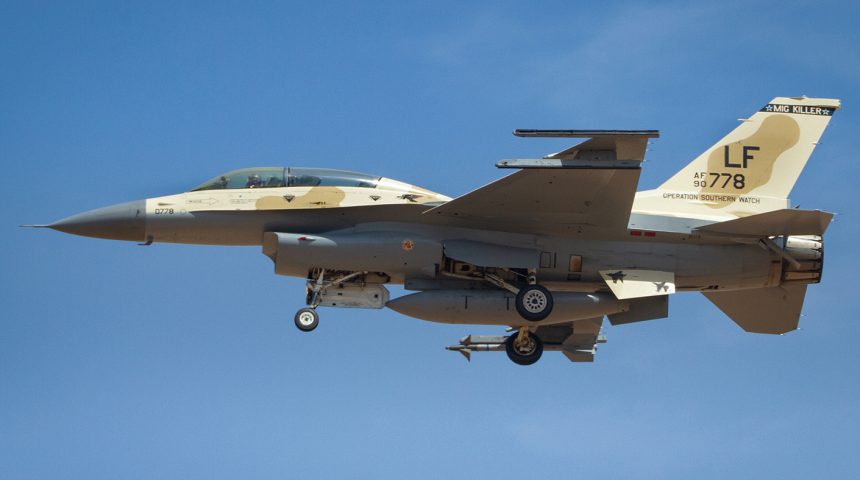The aircraft that scored the first aerial victory by an American F-16 as well as the first kill for the AIM-120 AMRAAM, now sports a desert brown color scheme.
The F-16D Block 42 #90-0778 is a pretty famous aircraft: on Dec. 27, 1992, during Operation Southern Watch (OSW), using callsign “BENJI 41” and flown by Capt. Gary “Nordo” North, this two-seater Fighting Falcon assigned to the 19th FS (Fighter Squadron) but on loan to the 33rd FS deployed to Dhahran, Saudi Arabia, from Shaw Air Force Base, South Carolina, shot down an Iraqi MiG-25 Foxbat E jet that had flown south of the 33rd parallel, entering the NFZ (No Fly Zone) enforced following the United Nations Security Council Resolution 688, adopted on Apr. 5, 1991.
That kill marked the first by a U.S. F-16 as well as the first achieved using an AIM-120 AMRAAM (Advanced Medium Range Air-to-Air Missile) “Slammer”.
A MiG-25 kill marking was placed on the left side just below the canopy frame of #90-0778 that sported the traditional two-tone gray color scheme of all the U.S. Air Force “Vipers” (the F-16’s nickname) at the time of the aerial engagement.
The very same aircraft, currently in service with the 310th FS at Luke Air Force Base, Arizona, has recently been given a completely new paint scheme as the photos in this article, sent us by our friend Thomas “Taj” Backus, show. The new livery seems to be based on the “chocolate chip cookie” pattern, a type of experimental desert color scheme that was applied to the F-16C Block 25 #84-1212 in December 1990, during Operation Desert Shield, as the aircraft, assigned to the 33rd TFS (Tactical Fighter Squadron), from Shaw AFB, and deployed to Al Dhafra AB, UAE.
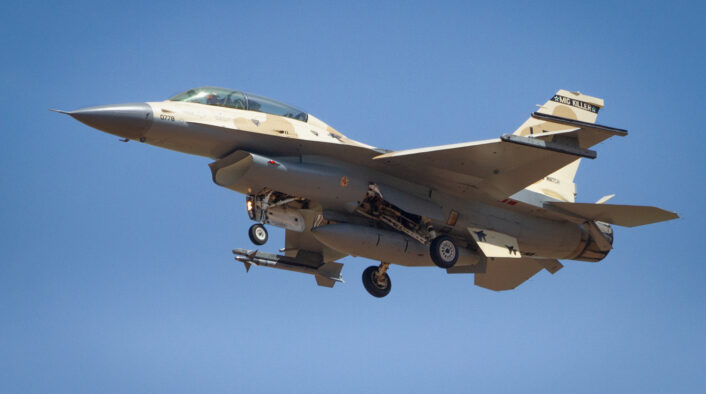
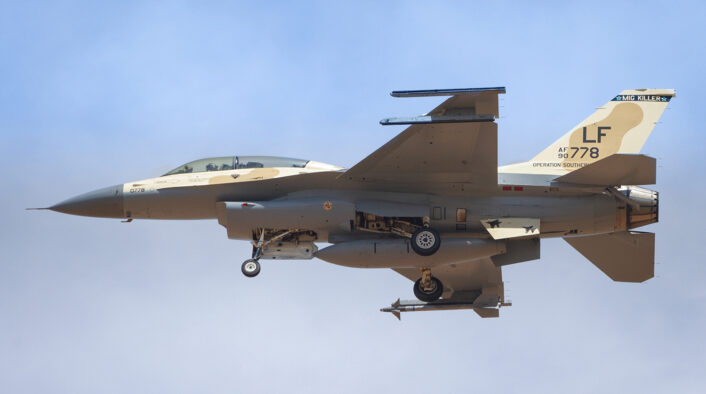
According to some sources, the F-16C flew with the experimental color scheme for just one week: the desert livery made the jet difficult to spot, increasing the risk of mid-airs and resembled the one used by the Israeli Air Force Vipers. For these reasons, it was quickly dropped. Until today: the old experimental camouflage has been “revived” and used on a MiG-killer airframe with markings that celebrate the Dec. 27, 1992 downing during Operation Southern Watch.
